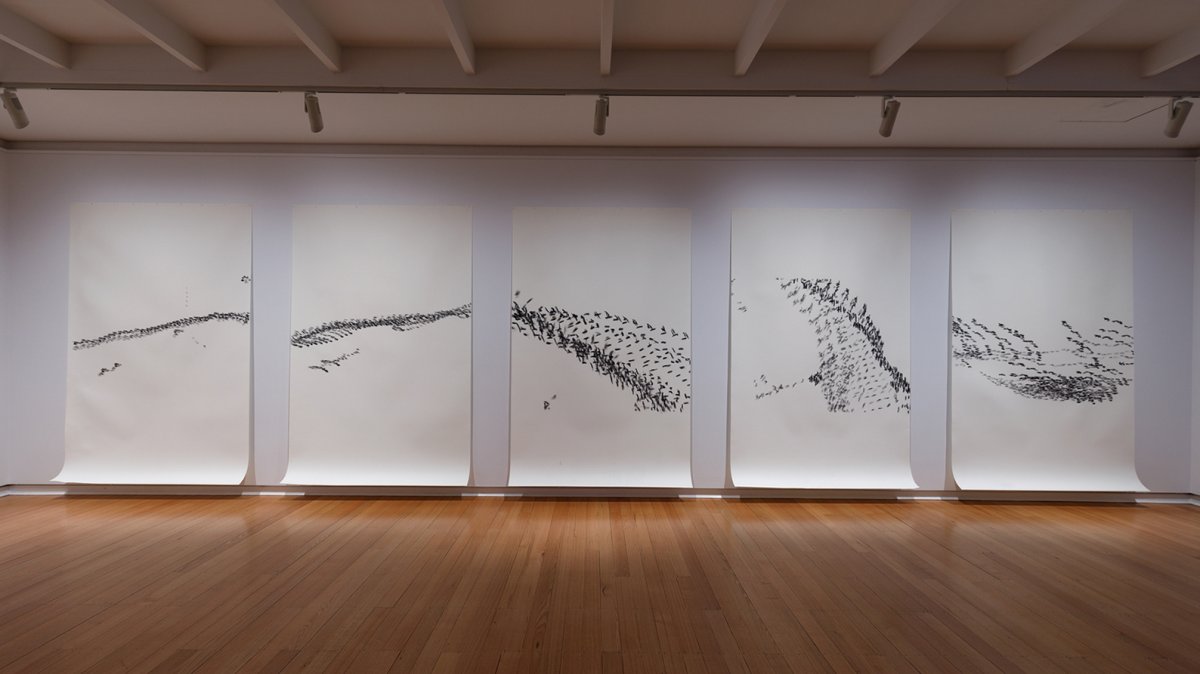Well how about that
Barbara Campbell
Australian, born 1961
Well how about that 2015
charcoal on stonehenge paper
Courtesy of the artist
Copyright Barbara Campbell
The phrase and title of multi-disciplinary artist Barbara Campbell's recent body of work comes from ancient Roman times, when one of the means for divining the gods' approval of human affairs was through signs conveyed ex avibus (Latin for 'from the birds').
In the works in the exhibition. Campbell focuses on the journey of shorebirds that migrate every year from one end of the globe to the other and back along ancient flyways. The East Asian-Australasian flyway is the flight path that links the shorebirds' non-breeding grounds in Australia and New Zealand to their breeding grounds in Siberia and the Arctic, through the crucial feeding and resting sites around the Yellow Sea: a round-trip of about 20,000 kms every year.
In ex avibus Campbell addresses the Anthropocene - defined as our current period of time marked by human activities that have impacted, and are impacting, the environment in ways that constitute distinct geological and environmental change. Now, environmental scientists, evolutionary biologists, ornithologists, and citizen scientists are invested in the survival of birds that regularly disappear to breed in the remote Artic tundra, their return numbers in steady decline. Each work in Campbell’s project is informed by her observations of the ways various shorebird species came into contact with members of the human species at various 'staging sites'. On such occasions the birds could be seen to direct the way these humans behaved, indeed, performed.
From 2010-19 the shorebirds took Campbell regularly to the sewerage plant at Werribee, the expansive mudflats of Broome, New Zealand and China. into bird hides and museums in these countries and others. In response to the shorebirds, she worked in different media: motion-capture video installations, video, large-scale drawings, watercolours, screenprints, and responsive sounds installations, shown together for the first time at Geelong Gallery.
Just as the shorebirds' flight path travels between the northern hemisphere towards Melbourne Water's Western Treatment Plant in Werribee and back, so too does the installation of works by Campbell chart a circuitous route through the building: a visual and spatial migration that simulates the shorebirds' journey and that of shorebird enthusiasts every Summer.


